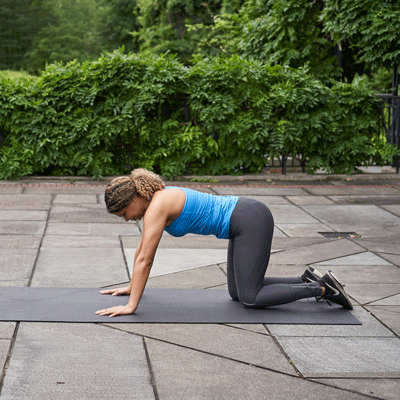Yoga is a versatile and accessible form of exercise with plenty of health benefits. And one of the most beneficial poses in yoga is Pigeon Pose.
Pigeon Pose
Pigeon Pose — called Eka Pada Rajakapotasana in Sanskrit — is an intermediate yoga pose that targets all the key muscles and joints in the lower half of your body, particularly the ones that get tight from long periods of inactivity.
If your hips are tight from sitting in a chair 8+ hours a day, Pigeon Pose could be the one for you.
- Start in a tabletop position.
- Bring right leg forward, bent at the knee, and fold right leg in front of you, with right foot toward the left side of the mat.
- Extend left leg behind you, as far as is comfortable, pressing the top of left foot to the mat.
- You can do this pose either as a backbend, sending your head toward the sky and keeping your chest up, or as a fold, trying to bring your chest as close to the mat as possible.
- Hold this pose for 10 deep breaths before switching to the other leg.
What muscles does Pigeon Pose target?
When done properly, Pigeon Pose will do a great job at opening up your hip flexors (psoas and rectus femoris), groin muscles, and hip rotator muscles (gluteus medius and minimus).
For some people, going straight into Pigeon Pose may be a little too intense. In that case, there are several preparatory poses you can practice to warm up. Here are a couple of the best ones.
Bound Angle Pose
Engages your: Groin muscles, pelvic muscles, psoas, hip adductors
Variations: Seated or reclined
In a seated position, bring the soles of your feet together, making sure your tailbone is firmly on the floor.
This pose will help stretch out your inner thighs and groin.
Head-to-Knee Pose
Engages your: Hamstrings, groin muscles, quads, calf muscles
Variations: Forward bend or revolved (side bend)
Sit on the floor or your mat with your legs out in front of you. Bend right leg so the sole of right foot is placed on or near your left leg. Make sure to leave a slight bend in left leg.
Reach for the toes of your left foot and bring your head as close as you can to left knee. Hold this pose for 10 deep breaths before switching legs.
As great as Pigeon Pose is, it’s even better with a closer. You can follow it up with several other poses to strengthen your repertoire and open your hips even more.
The following stretches can be helpful as cooldowns, particularly if you’re using Pigeon as the peak of your yoga flow.
Knees-to-Chest
Engages your: Lower back
Variations: One knee or two knees
Knees-to-Chest is often considered a soothing counterpose to a more strenuous pose like Pigeon.
While lying on your back, draw your knees toward your chest, hugging them if you can.
Reclined Twist
Engages your: Hips and spine
Variations: Keep knees together or bend one leg over the other.
Lie on your back and extend arms out in a “T” formation. Bring knees into chest, and then drop knees to one side and direct your gaze in the opposite direction. Take a few deep breaths, and then switch sides.
This position will lengthen your spine and stretch your hips, so it’s a relaxing follow-up to Pigeon.
Be careful doing Pigeon Pose if you’ve had a knee injury or have other knee problems. If you’re new to the pose, consult a certified yoga instructor or physical therapist before trying it, since you could end up hurting your knees.
Also, watch out for some common mistakes that can increase the risk of injury or reduce the effectiveness of the pose.
Avoid aligning your bent knee with your hip. You want to focus on keeping that knee on the outside of your hipline. Aim to keep it pointed toward the outside of your mat so you have a good base for getting a full stretch in your hip.
The great thing about Pigeon Pose is that it’s an excellent way to measure your progress. While you may struggle to maintain it in the beginning, good prep, consistency, and follow-up should make Pigeon Pose a staple in your fitness routine.


